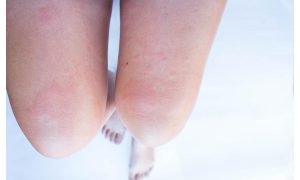
Daily walking, enclosed footwear, and year-round humidity shape the way feet respond to pressure and moisture. Thoughtful foot care in Singapore reduces skin maceration, nail problems, and recurrent pain that follows long commutes or standing work. One of the most common issues is the big toe nail piercing the surrounding skin. Knowing how this starts and how to intervene early prevents an ingrown toenail in Singapore from progressing to infection.
How Ingrown Toenails Develop
An ingrown nail occurs when the nail edge presses into or grows beneath the neighbouring skin fold. Contributing factors include curved nail shape, tight shoes, vigorous sports, and trimming nails too short or rounded. In hot climates, sweat softens skin and nails, making it easier for an edge to cut in. Mild cases cause tenderness and redness; advanced cases bring swelling, granulation tissue, and discharge. Early recognition is the simplest way to avoid procedures.
Nail-Cutting Technique That Protects Skin
Safe trimming supports healthy foot care in Singapore. Cut nails straight across with a slight contour that mirrors the natural plate, then smooth the corners rather than digging them out. Leave a tiny free edge so the plate clears the skin as it grows. Avoid tearing off corners or chasing a spike with sharp tools at home, as this often creates a new hook that worsens an ingrown toenail in Singapore.
Footwear, Socks, And Everyday Mechanics
Shoes should allow the toes to splay without the big toe rubbing the upper. Depth in the toe box prevents pressure on the nail. For running or court sports, ensure a thumb’s width in front of the longest toe to reduce repeated impact. Choose moisture-wicking socks to keep the nail folds drier during long days. Small changes in fit often relieve the constant micro-trauma that keeps the nail embedded.
Home Measures For Early Soreness
At the first sign of irritation, a short course of warm saline soaks can soften the skin and reduce debris. Dry the toe thoroughly, then apply a thin layer of antiseptic to the fold. If a visible lint or nail sliver sits on the surface, it may be lifted gently without forcing it deeper. Pause high-impact activity for a day or two and switch to roomier footwear. These simple steps are part of sensible foot care in Singapore and often settle a mild flare.
When To See A Podiatrist
Seek professional assessment if pain escalates, the area becomes swollen, or there is discharge. People with diabetes, reduced circulation, or immune compromise should avoid self-cutting and book promptly. A podiatrist can reduce the offending edge safely, debride granulation, and apply dressings that protect the fold as it calms. Accurate triage prevents a minor ingrown toenail in Singapore from becoming a persistent infection.
Clinical Treatments That Work
For persistent cases, conservative care starts with careful removal of the nail spicule under sterile conditions, localised pressure relief, and instructions for daily hygiene. If the nail shape or repeated trauma is the driver, partial nail avulsion with a chemical matrixectomy may be offered. This procedure numbs the toe, removes a small strip of nail, and treats the root on that side so the problematic corner does not regrow. Recovery is usually straightforward with daily saline cleansing and a simple dressing. This targeted approach is common for recurrent ingrown toenail presentations in Singapore that fail conservative care.
Managing Infection And Dressings
If infection is suspected, the clinician will clean the site, consider a swab, and use antiseptic dressings that keep the fold protected while it heals. Systemic antibiotics are reserved for spreading cellulitis or patients at higher risk, rather than routine use. Clear instructions on home care, footwear, and activity allow the toe to settle faster and reduce the chance of a return visit.
Activity, Sport, And Return-To-Work
Many patients can continue desk-based work after conservative care, such as a medical pedicure, or minor procedures, provided they wear roomy shoes and change dressings as advised. Sport can resume once tenderness resolves and shoes no longer irritate the fold. Rushing back into tight boots or high-intensity drills is a common reason a recently treated ingrown toenail in Singapore becomes sore again.
Long-Term Prevention In Daily Life
Keep nails at a moderate length, dry feet carefully after showers, and rotate footwear so shoes fully dry between uses. Replace worn pairs that compress the forefoot. For athletes, lace techniques that lift the upper away from the toes reduce nail trauma on descents. These habits embed durable foot care in Singapore, reducing the likelihood of recurrence across the humid months.
Conclusion
Consistent habits and early action prevent the most painful nail flares. Good foot care in Singapore focuses on nail technique, footwear space, moisture control, and timely clinical input. When conservative steps are not enough, precise procedures offer durable relief with minimal downtime. Addressing risk factors makes recurrence less likely and keeps you comfortable on your feet.
For professional assessment and tailored care for ingrown toenails in Singapore, book an appointment with Fine Podiatry Clinic.







